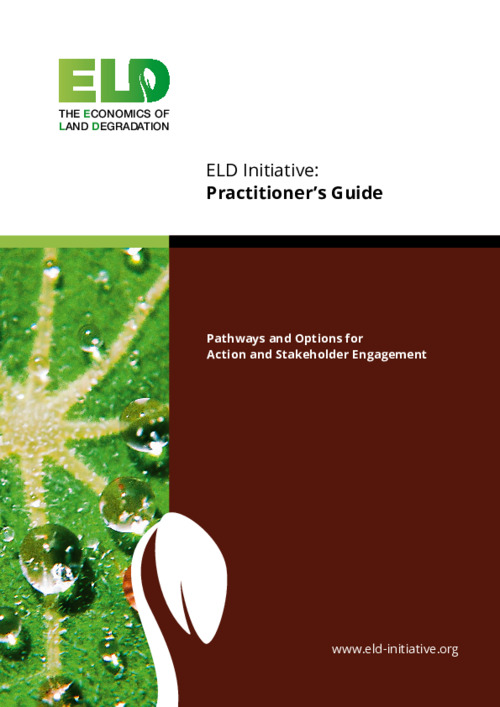ELD Initiative: Practitioner’s Guide_Pathways and Options for Action and Stakeholder Engagement
Abstract
As the world’s population continues to rise, there is
an ever increasing demand for our land to produce
a diverse range of products such as food, timber,
and fuel. Our growing need for these goods is
leading to higher levels of competition between
different land uses and, as a result, land users. Not
only is the quantity of land available for production
under current technical and economic conditions
limited, but there is also growing evidence that the
quality of our land is degrading (Safriel, U. N. 2007;
Millennium Ecosystem Assessment, 2005; TEEB,
2010). As a result, healthy land that is available for
production is becoming an increasingly scarce
resource, and there is a great need to make better
use of what we have available, both now and in
the future.
Improved co-production of knowledge is needed
between scientists, local community members,
technical advisors, administrators and policy
makers. These different groups may be considered
“stakeholders”, defined as those who are affected
by or who can affect a decision or issue (Freeman,
1984). Stakeholder engagement can be defined
as “a process where individuals, groups and
organisations choose to take an active role in
making decisions that affect them” (Reed, 2008). It is
argued that stakeholder engagement may enhance
the robustness of policy decisions designed to
reduce the vulnerability of ecosystems and human
populations to land degradation (de Vente et al.,
in press). In this way, it may be possible to develop
response options that are more appropriate to the
needs of local communities and can protect their
livelihoods and wellbeing (ibid)

